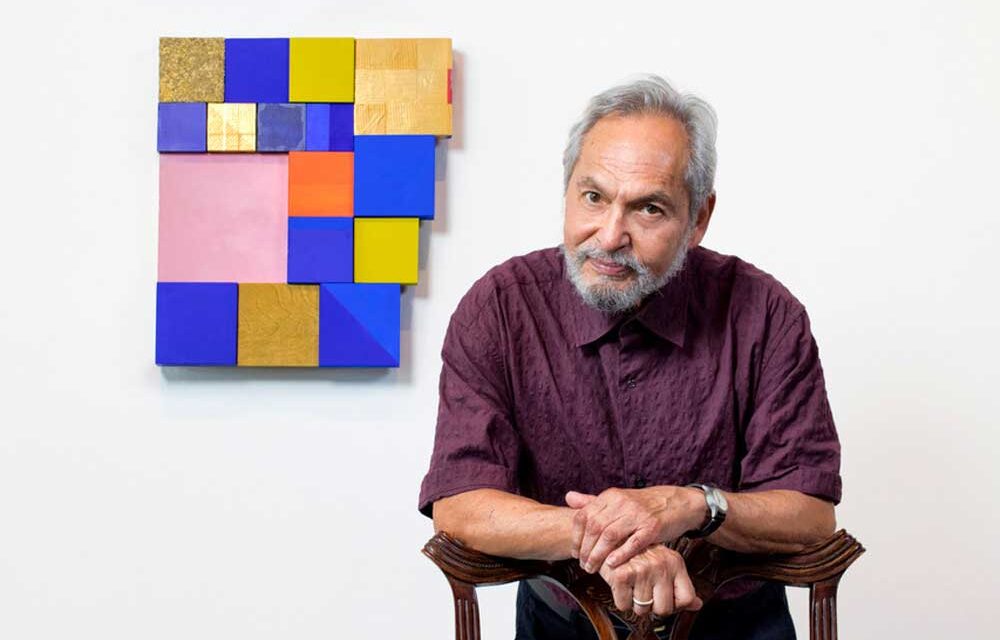Carlos Merida’s mural at HemiFair Park may well be San Antonio’s first public Mexican modern art piece [Fig. 1*]. In Mexican Modern Art, critic Fausto Ramirez linked Merida’s fascination with the indigenous fabrics of his
native Guatemala to his modern creative designs found in paintings similar to that at HemiFair Park. Merida was born in Guatemala but lived most of his life in Mexico City.
Fausto Ramirez concluded that “The geometric synthesis of the sumptuous textile designs led [Merida] to an extreme simplification, which he ended up identifying as the expression of a kind of ‘essence’ or ‘soul’ of the Americas.” The “extreme simplification” can be found on the lower section of the HemiFair Park mural, while more complex designs and indigenous figures appear at the center and top of the mural.
Ironically, the decision to place the 92 acres of HemiFair Park in the residential community between Market and Durango in 1968 resulted in the displacement of thousands of families, including the family of artist Jesse Amado.
Amado grew up in what historians described as the “old city” of San Antonio. Urban Historian Frank Duane described Amado’s birthplace as a “quiet neighborhood known as Germantown,” a community initially settled in the mid-nineteenth century by a diverse group of immigrants of German, Alsatian, Mexican, Polish, and African American ancestry. By the 1950s most of the old European immigrants had moved to the suburbs. Amado’s home was one of the 1,349 structures that were
demolished by Urban Renewal in 1966 to build Hemisfair Park.
Amado’s family moved to Southtown, and he attended Brackenridge High School. Two experiences during his teen years influenced his art: working two summers with the famed architect O’Neil Ford and spending every afternoon and most weekends in downtown San Antonio. Upon his graduation from high school in 1968, Amado joined the United States Navy. When he arrived for basic training in Newport, New Jersey, he made friends with a
fellow ensign from Brooklyn, New York. With his friend, he visited New York on shore leave to take in all the sights and visit New York’s major museums. It was on these short trips that Amado first encountered the brilliant work of Andy Warhol, an artist he credits as instrumental to his later artistic formation.
Upon completion of his Navy service in 1972, Amado lived in New York for two years working in service jobs in the Wall Street community. His love for poetry, art, and writing brought him back to San Antonio where he enrolled at San Antonio Community College [SAC]. At SAC Amado was introduced to the creative paintings of famed art professor Mel Casas.
Wishing to expand his knowledge and
understanding of the arts and humanities, Amado moved to Austin where he enrolled at the University of Texas. With a degree in English, he moved back to San Antonio and took a job with the San Antonio Fire Department, a position he considered ideal because it allowed him three to four days a week to create art.
A major breakthrough in Amado’s career came in 1995 when ArtPace chose him among the first artists for its new Residence program.
Amado’s initial interest in the arts revolved around ceramics and material construction. Modern and conceptional art has international origins and as an art movement has different meanings. Hungarian Laszlo Moholy-Nagy’s definition is noteworthy. Modern art, he wrote, “is the sense’s grindstone, sharpening the eyes, the mind, and the feeling. It creates new types of spatial relationships, new inventions of forms, new visual laws–basic and simple–as the visual counterpart to a more purposeful, cooperative human society” [Modern Art 201].
Amado, who defines himself as a conceptional artist, considers most of his creative works as personal statements. He shared with me the meaning of one of his more recent creations [Fig. 2]. When he found a wounded bluejay bird near his front porch, Amado decided to save the bird from harm and took it to the wildlife center. He returned home and created an art piece on foam board that represented the experience.
His “bluejay” creation has several sections including a drawing of a fallen bird perched upside down. Other sections include feathers that he found near where the bird had fallen, perhaps a result of an attack by a cat from a neighbor’s house. Amado explained the impact of the bluejay on his artistic rendition as a lesson for all. “We are all fragile in some way and vulnerable to harm.” The creative narrative is a result of an experience that inspired him to address the everyday dangers in society.
As I walked about his studio and the rooms in his home where Amado displayed his art, I noticed that he worked with many different mediums. Several of his works are created from felt material. He has a preference for certain colors, especially Yves Klien Blue, but many of his paintings and sculptures also contain bright orange and reds. What appears to be a geometric circle is actually linked to a narrative about the round pills that people consume. His conceptual statement is about addictive drugs, such as opioids, which are far too available and much too dangerous.
Amado is committed to the idea that art has more meaning when it focuses on conceptional ideas rather than representation. His artistic concepts are mostly about everyday experiences, some pleasant, some uneventful, and some even tragic. His creations are often based on what he senses, what he sees, and what he thinks. His art is driven by inspiration and can be best understood by an exploration of his thought processes during and after the creation. Most importantly, he creates for the purpose of personal introspection and insight, with little regard to the marketability for his work.
Jesse Amado: A Latino Conceptual Artist









